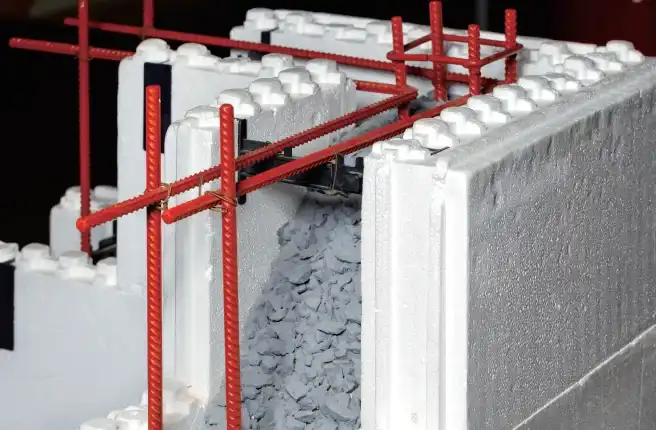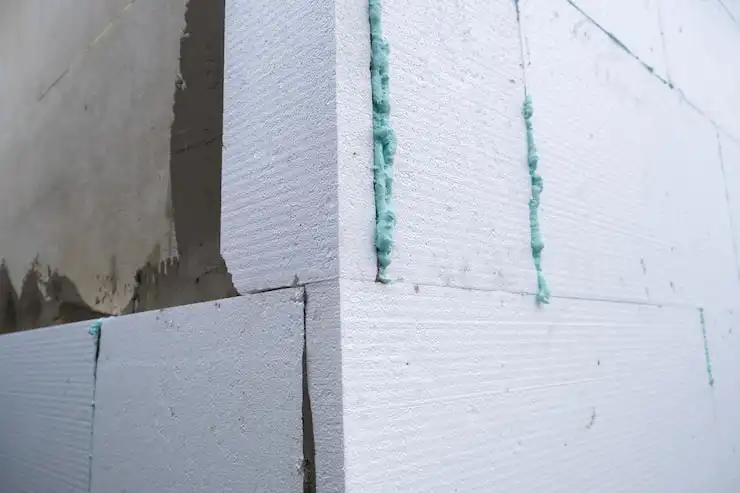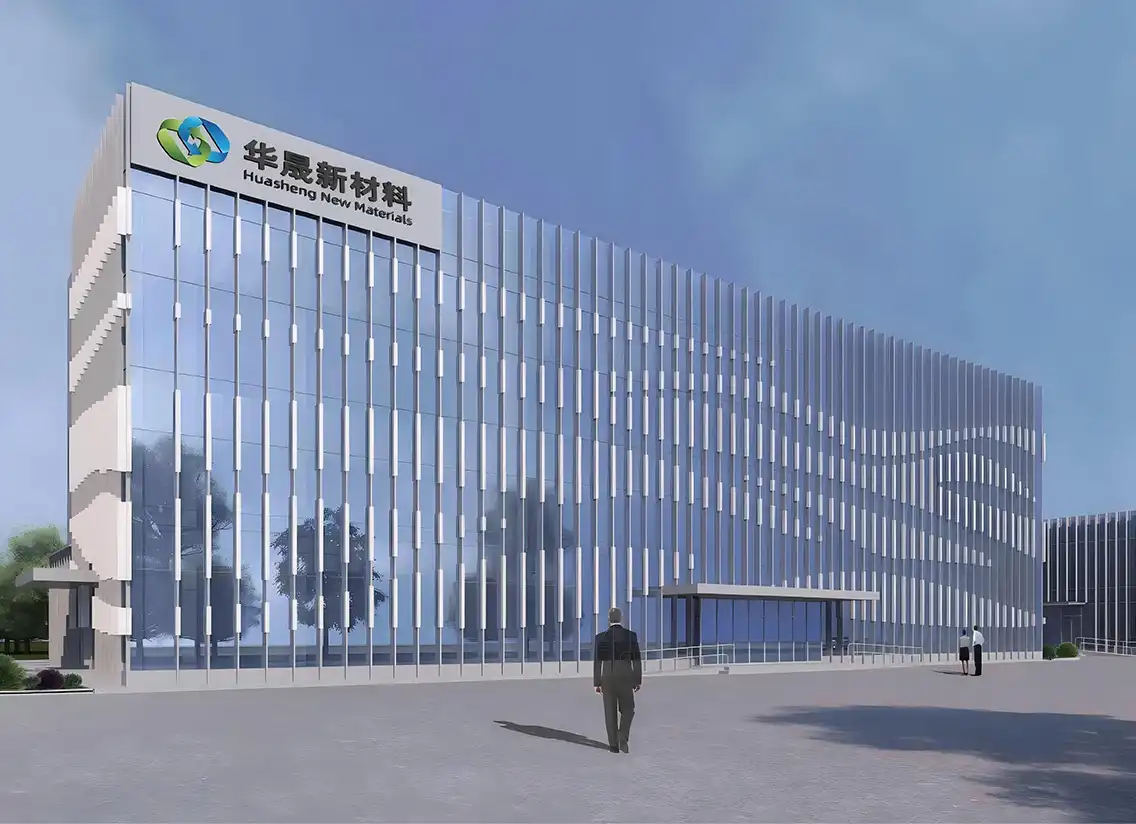Saving energy and caring for the planet are big goals in building projects today. EPS insulation boards are a top pick for commercial construction. These light, strong boards keep buildings warm, save money, and help the environment. Whether you’re working on offices, stores, or factories, polystyrene thermal insulation is a smart choice. It meets modern building rules and cuts long-term costs.

Key Properties of EPS Insulation Board
EPS insulation boards are built to work well in many situations. Their special features make them perfect for big commercial projects.
Thermal Performance and Energy Efficiency
EPS insulation boards are great at stopping heat from moving. HUASHENG’s EPS foam products are awesome for keeping buildings cozy. They cut down on energy use by blocking heat through walls and roofs. This keeps indoor temperatures steady all year. It makes people inside feel comfy. Plus, it lowers the need for heating and cooling systems.
Moisture Resistance and Long-Term Durability
EPS boards have tiny, sealed cells that keep water out. This makes them last a long time without getting damaged. They don’t soak up moisture like some materials. Their steady shape means they keep insulating well for years.
Lightweight Nature and Ease of Installation
EPS is super light compared to other hard insulation boards. This makes it easy to move around. It also speeds up installation on big projects. Faster setup means lower costs for workers, which is a big deal for commercial jobs.
Advantages of Polystyrene Thermal Insulation in Commercial Applications
Polystyrene insulation has cool benefits that make it a great fit for commercial buildings.
Enhancing Building Energy Codes Compliance
New building rules ask for better energy savings. EPS boards help meet these goals. Their low thermal conductivity stops heat from escaping. Graphite-enhanced EPS, like S-32, is even better. Its thermal conductivity is less than 0.032W/M.K, while regular EPS is at 0.039W/M.K. That means S-32 is over 25% better at insulating.
Reducing Operational Costs Over Time
EPS cuts down on heating and cooling needs. This lowers utility bills a lot. Over a building’s life, these savings add up. It’s a key reason why commercial builders love EPS.
Supporting Sustainable Construction Goals
EPS helps make buildings greener. It saves energy and cuts down on harmful gases. This reduces the building’s impact on the planet. Using EPS is a step toward eco-friendly construction.

Comparing EPS with Other Common Insulation Materials
Knowing how EPS compares to other materials shows why it’s so valuable.
EPS vs. XPS (Extruded Polystyrene)
EPS and XPS are both polystyrene, but XPS is denser and blocks water a bit better. Still, EPS lets air move through more easily. It’s also cheaper for the same insulation power.
EPS vs. Polyurethane Foam
Polyurethane foam insulates better per inch, but it’s pricier. It also uses chemicals that might harm the environment. EPS is kinder to the planet and stays strong for a long time.
EPS vs. Mineral Wool
Mineral wool is great for fire safety and sound blocking. But it’s heavier and harder to install than EPS. It can also soak up water if not protected, which hurts its insulation over time.
Fire Safety and Flame Retardant Capabilities of EPS Boards
Fire safety is super important in big buildings. EPS has options to keep things safe.
Fire-Resistant Grades and Their Applications
EPS comes in flame-retardant grades for extra safety. FGE-graphite polystyrene reaches B1 level, with an oxygen index of ≥32. These grades work well in places needing strong fire protection.
Meeting Industry Standards for Fire Safety
These special grades follow strict fire rules. They keep buildings safe while still insulating great. They’re perfect for projects that need both safety and energy savings.
Environmental Impact and Sustainability Considerations
The environment matters a lot when choosing building materials today.
Recyclability and Eco-Friendly Manufacturing Processes
EPS boards can be recycled when they’re no longer needed. Many makers, like HUASHENG, use clean methods to make EPS. Their foam packaging cuts down on wasteful materials, helping the planet.
Contribution to Green Building Certifications (e.g., LEED, BREEAM)
Using flame-retardant or graphite-enhanced EPS, like S-32, helps projects earn certifications like LEED or BREEAM. HUASHENG’s EPS has earned LEED Green Building Gold Certification by boosting energy savings.
Customization Options for Diverse Commercial Needs
Every building project is different. EPS can be made to fit specific needs.
Available Grades: Common, Flame Retardant, Graphite, Carbon Black, Environmental Protection
HUASHENG offers all kinds of EPS: Common Grade (E), Flame Retardant (F), Graphite-enhanced (FGE), Carbon Black for UV protection, and Environmental Protection grades. Each one is made for specific jobs. Their main products include FGE-graphite polystyrene and low thermal conductivity carbon polystyrene FGE material.
Tailored Dimensions and Densities for Project Specifications
EPS boards come in different sizes and densities, usually above 18kg/m³. They’re perfect for walls, roofs, or foundations. High-density options (18KG/m³ or more) work great for tough projects.
Cost-Effectiveness in Large-Scale Projects
Money matters in big building projects. EPS helps keep costs down.
Material Affordability Compared to Alternatives
EPS, especially standard or graphite grades, is cheaper than polyurethane or mineral wool for the same insulation power. It saves money without losing quality.
Labor Savings Due to Installation Efficiency
EPS is light and easy to cut on-site. You don’t need special tools or gear like with mineral wool. This speeds up installation. For example, EPS can cut project time by 18 days compared to rock wool.
Real-World Applications in Commercial Buildings
EPS works great in all kinds of commercial projects.
Office Complexes and Retail Centers
EPS saves energy in places like offices or malls, where heating and cooling are used a lot. It keeps indoor temperatures steady, making spaces comfy.
Warehouses and Industrial Facilities
Big spaces like warehouses or cold storage need steady temperatures. High-density graphite or carbon black grades, like FGE, handle tough conditions well.
Educational Institutions and Healthcare Buildings
Schools and hospitals love EPS for its sound-blocking and eco-friendly options. HUASHENG’s Environmental Protection grades keep these buildings safe and green.
HUASHENG: A Trusted Supplier of High-Quality EPS Solutions
HUASHENG is a top name in making smart, high-quality insulation products.

Overview of HUASHENG’s Product Offerings: REPS Series
Common Grade for Standard Use Cases
E-standard materials are solid for everyday jobs. They work well in all kinds of commercial projects.
Flame Retardant Grade for Enhanced Safety Requirements
Grades like FS or FSH meet B1 fire standards. They stay strong even under heat, keeping buildings safe.
Graphite Grade for Superior Thermal Performance
S-32 graphite-enhanced EPS boosts insulation by over 25% compared to regular EPS. Its thermal conductivity is less than 0.032W/M.K.
Environmental Protection Grade for Green Projects
These grades are perfect for eco-friendly builds. They’ve earned LEED Green Building Gold Certification and meet tough environmental rules.
Carbon Black Grade for UV Resistance Applications
FGE carbon polystyrene has low thermal conductivity and resists UV rays. It’s great for outdoor projects needing extra weather protection.
Customized Solutions to Fit Unique Project Demands
HUASHENG makes Customized REPS to fit your project’s needs. From bead size to molding pressure, they can tweak everything for you.
FAQs
Q1: Is polystyrene insulation safe to use inside buildings?
A: Yes! Flame-retardant grades, like those at B1 level, meet tough fire safety rules. They’re safe for most buildings worldwide.
Q2: Can I use EPS insulation outdoors?
A: You bet! Carbon black grades, like FGE, resist UV rays and work great for outdoor walls exposed to sun and weather.
Q3: How does using graphite-enhanced EPS affect my project’s energy rating?
A: S-32 graphite EPS improves insulation by up to 25%. It boosts energy ratings and helps earn certifications like LEED Gold, saving 14% more energy.






